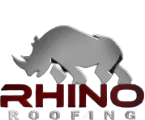Little Rock Roof Replacement Guide: Choosing the Right Materials for Arkansas Weather
When it's time for a roof replacement in Little Rock, Arkansas, choosing the right materials can mean the difference between a roof that lasts decades and one that requires frequent repairs. Arkansas homeowners face unique challenges including severe thunderstorms, high humidity, temperature swings from freezing winters to sweltering summers, and occasional hail damage. Understanding these local conditions is essential for making an informed roofing decision.
Arkansas Climate Challenges for Roofing Systems
Little Rock experiences a humid subtropical climate with average summer temperatures reaching 93°F and winter lows around 31°F. This thermal cycling causes roofing materials to expand and contract repeatedly, leading to granule loss on asphalt shingles and potential seal failure. The region receives approximately 50 inches of annual rainfall, often delivered through intense thunderstorms that can produce winds exceeding 70 mph and hail up to 2 inches in diameter.
Arkansas building codes require roofing systems to withstand wind speeds up to 90 mph in most residential areas. When selecting replacement materials, it's crucial to choose products that meet or exceed these requirements while addressing the specific moisture and temperature challenges of central Arkansas.
Architectural Shingle Options for Arkansas Homes
Architectural shingles remain the most popular choice for roof replacements in Little Rock due to their proven performance in Arkansas weather conditions. Premium architectural shingles feature algae-resistant granules that prevent the black streaking common in humid climates and enhanced adhesive strips for superior wind resistance.
Class 4 impact-resistant shingles offer excellent protection against Arkansas hail storms and often qualify homeowners for insurance discounts. These shingles use modified asphalt formulations and reinforced mat construction to withstand impacts up to 2-inch steel balls dropped from 20 feet, simulating severe hail conditions.
For Arkansas installations, proper underlayment selection is critical. Synthetic underlayment provides superior moisture protection compared to traditional felt, with tear resistance up to 250 pounds and the ability to remain exposed for up to six months during extended construction periods.
Metal Roofing Performance in Arkansas
Standing seam metal roofing systems excel in Arkansas conditions, offering wind resistance ratings up to 140 mph when properly installed with structural-grade fasteners. The reflective properties of metal roofing can reduce cooling costs by 10-25% during Arkansas summers, while the non-combustible rating provides additional fire protection.
Galvalume coating systems resist corrosion in Arkansas humidity better than traditional galvanized steel, with manufacturer warranties extending 40-50 years. Proper installation requires thermal movement clips to accommodate the 4-6 inch expansion that occurs across a typical residential roof during Arkansas temperature swings.
Professional Installation Standards
Arkansas roof replacements require adherence to specific installation protocols for optimal performance. Starter strips must extend beyond the roof edge by 1/4 to 3/8 inch for proper water shedding, while hip and ridge cap installation requires 6-inch minimum exposure to prevent wind uplift.
Ventilation requirements in Arkansas call for minimum 1 square foot of net free area per 150 square feet of attic space, with balanced intake and exhaust ventilation. Proper ventilation prevents ice damming during rare freezing events and reduces moisture buildup that can compromise deck integrity.
When considering storm damage restoration needs, selecting materials with documented wind and impact ratings ensures your replacement roof will provide long-term protection against Arkansas weather patterns.
Investment Protection and Warranty Coverage
Quality roof replacement represents a significant investment for Little Rock homeowners, typically ranging from $8,000 to $25,000 depending on material selection and roof complexity. Manufacturer material warranties vary from 25 years for standard architectural shingles to lifetime coverage for premium impact-resistant products.
Workmanship warranties should provide minimum 10-year coverage on installation quality, ensuring proper flashing installation, fastener patterns, and ventilation integration. For Arkansas installations, verify that warranty coverage specifically addresses wind and hail damage, as these represent the most common causes of premature roof failure in the region.
Ready to explore roof replacement options for your Little Rock home? Contact Rhino Roofing at (501) 813-9009 for a comprehensive assessment of your current roof condition and detailed recommendations for materials that will perform optimally in Arkansas weather conditions. Our experienced team provides thorough evaluations and expert installation services backed by comprehensive warranty protection.
